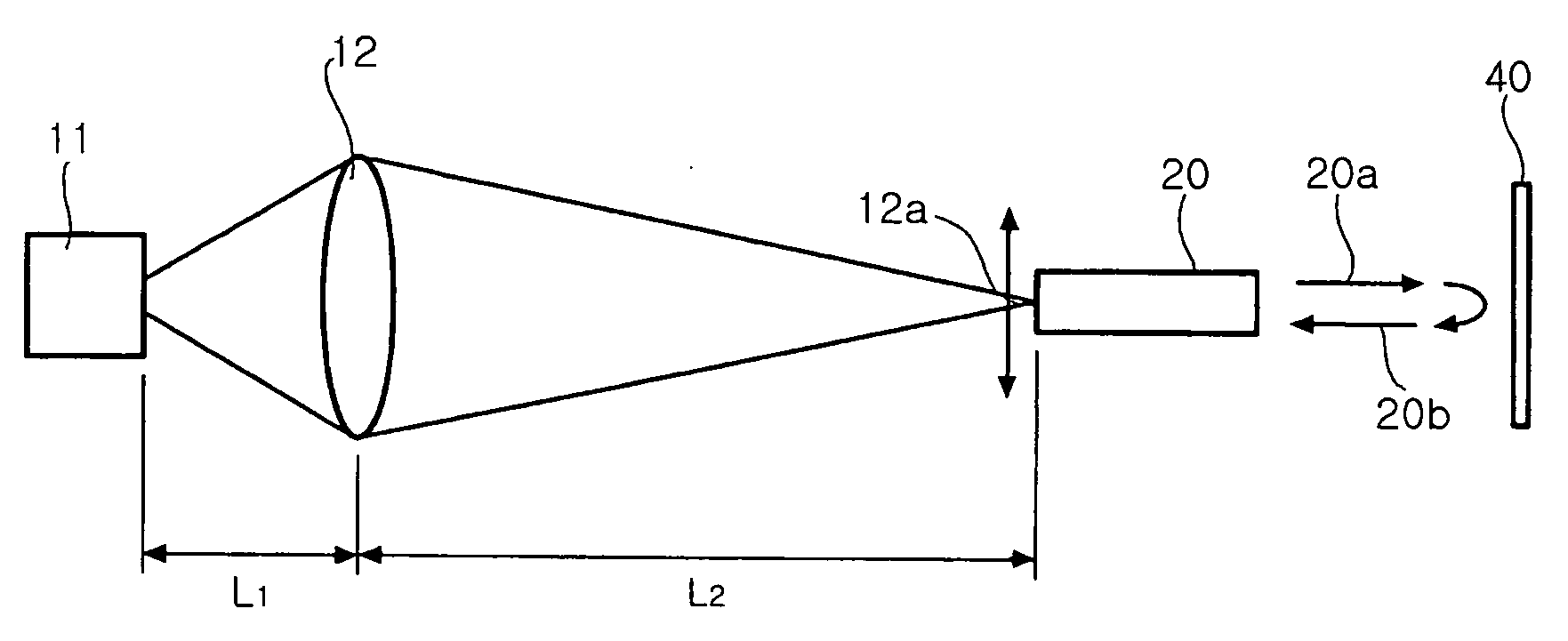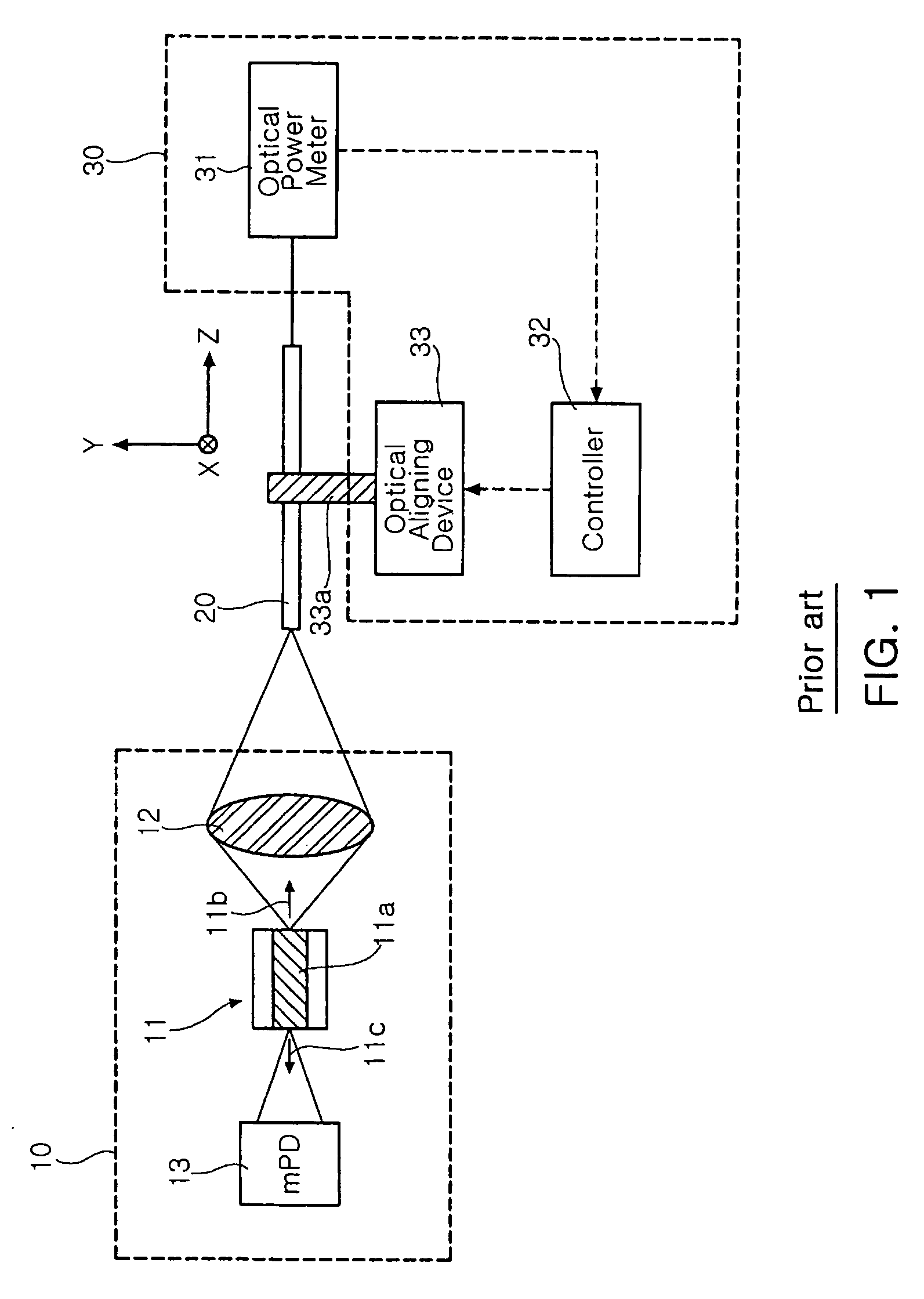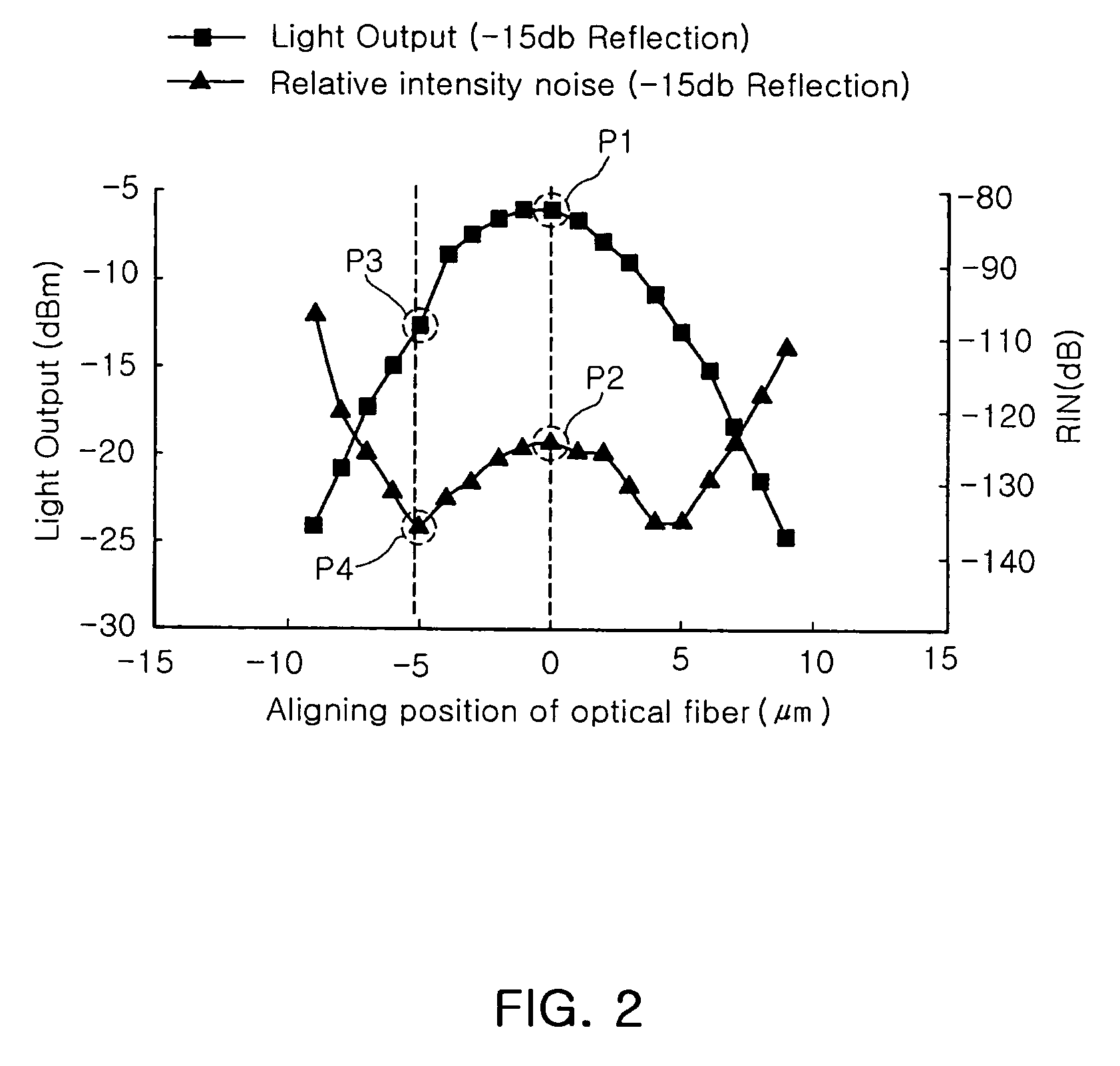Optical alignment method and apparatus
a technology of optical alignment and optical isolator, which is applied in the field of optical bidirectional transceivers, can solve the problems of increasing the manufacturing cost the difficulty of minimizing the size of the difficulty of applying the optical isolator to the optical transceiver module for a subscriber network application requiring low cost and small size, so as to save the alignment task time and achieve the effect of low cos
- Summary
- Abstract
- Description
- Claims
- Application Information
AI Technical Summary
Benefits of technology
Problems solved by technology
Method used
Image
Examples
Embodiment Construction
[0032] Hereinafter, the present invention will be described in detail with reference to the accompanying drawings as follows. It is noticed that like reference numerals designate like or corresponding components throughout the several drawings. Moreover, in the following description of the present invention, if the detailed description of the already known structure and operation may confuse the subject matter of the present invention, the detailed description thereof will be omitted.
[0033] The present invention is different from the conventional method and apparatus and is intended to carrying out an optimal optical alignment by taking the maximum light output and the minimum RIN into consideration. In an optical transceiver module without an isolator, at an optical alignment position indicating the maximal light output, where the RIN is also maximal by experiment. The optical alignment is carried out based on the maximum output by adjusting a focus of an optical axis, and then th...
PUM
 Login to View More
Login to View More Abstract
Description
Claims
Application Information
 Login to View More
Login to View More - R&D
- Intellectual Property
- Life Sciences
- Materials
- Tech Scout
- Unparalleled Data Quality
- Higher Quality Content
- 60% Fewer Hallucinations
Browse by: Latest US Patents, China's latest patents, Technical Efficacy Thesaurus, Application Domain, Technology Topic, Popular Technical Reports.
© 2025 PatSnap. All rights reserved.Legal|Privacy policy|Modern Slavery Act Transparency Statement|Sitemap|About US| Contact US: help@patsnap.com



